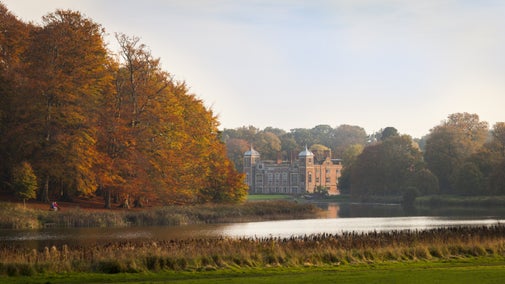Tree management
Woodland coppices
Our volunteers continue the traditional management technique of coppicing, to encourage new growth. They work throughout the winter cutting coppice poles in Elgin's Coppice and protecting the stumps.
Pollards
Hatfield Forest has over 850 veteran pollard trees, each with its own management plan. The aim is to keep the trees alive as long as possible.
Once dead, we try to keep the trees standing by turning them into monoliths, by removing all the branches. Standing deadwood is a rare and therefore more valuable habitat than fallen deadwood. Once fallen, deadwood rots quickly and so the habitat is lost.
Restoring wood pasture
One of the special features of Hatfield Forest is the open areas between the coppices, known as wood pastures. These include ancient, sometimes pollarded, trees and provide a rich habitat. We are undertaking a long-term project to restore a 25-hectare area in the north west of the Forest by Elmans Green, as well as creating some new pollards.
It is with this ongoing project that we then hope to establish new wood pasture at a landscape level, creating a mosaic of habitats for wildlife whilst developing one of the Forest’s key features for the enjoyment of future visitors.
The Wall Wood Restoration project
Wall Wood is ancient coppice woodland adjacent to Hatfield Forest. This is important for its wildflowers such as the violet helleborine, bluebell and the nationally scarce oxlip.
Woodland wildlife has declined dramatically over the past 30 years, largely due to increasing fallow and muntjac deer pressure, resulting in habitat loss. With help from Natural England and the Forestry Commission, we have decided to halt this wildlife decline by re-commencing coppicing and protecting the young growth from deer again, after a 50-year gap.
Restoring the historic lakeside parkland
The Shell House was built in the 1750s to provide a shelter for parties visiting the Forest from nearby Hallingbury Place. Evidence from the late nineteenth century suggests that the area in front of the Shell House was laid to lawn and the eastern bank was planted with a few specimen trees, allowing fine views across the lake.
The team has undertaken a programme of work to restore this part of the Capability Brown landscape. They have replanted native trees and created a variety of new habitats for wildlife to flourish. Visitors are now able to enjoy newly restored views across the main lake and towards the Decoy lake.
Past projects
Restoring Woodside Green
Woodside Green lies to the south of Hatfield Forest, next to Wall Wood. It is mainly open pasture, with a few isolated mature trees. Maps from over 100 years ago show there were many more trees there, mostly around the margins. We secured funding from the People's Postcode Lottery to restore this historic parkland.
Trees were planted in late 2018. Species planted included hawthorn, sessile oak, hornbeam and crab apple. It was probably a wider range of species than were grown on the Green in the past, but all are native to the locality. Over time, we will see the slow restoration of this historic landscape, revitalising one of the largest grazed commons in Essex.
The marsh
In 2010 we started a project to restore the marsh area between the lake and London Bridge. The marsh had slowly been taken over by scrub (shrubby tree regrowth) and this was changing the habitat. To maintain the marsh and increase biodiversity we removed the scrub. A year later some dormant species had returned.
Kingfisher bank
Across the nation, kingfisher numbers have been dropping and the rise in water levels has meant their habitats are being lost. To counteract this problem, our volunteer rangers built an artificial kingfisher bank. Thanks to this, we now have two resident kingfishers who can occasionally be spotted in the Marsh and on the Decoy Lake.




















